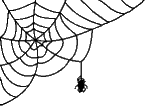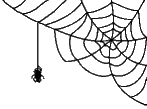
Sparks!
Sir Tart-a-lot

Joined: 30 Aug 2003
Karma :   
|
  Posted: 23:43 - 18 Jan 2004 Posted: 23:43 - 18 Jan 2004  Post subject: Carburettors Essay Post subject: Carburettors Essay |
  |
|
Hey, this is an essay I've handed in for my college course work, thought it might be of use to anyone from here who wants to learn more on mechanics. If this is any use I'll stick up further essays I hand in at college. Let me know if it's of any help. 
Carburettors
A Carburettor is a device that adds fuel to the air intake of an engine. It is vital that they provide the correct air and fuel mixture into the cylinders of the engine from tick over to flat out at maximum revs. The carbs are very complex and if not adjusted properly and serviced, can cause a motorcycle to run rich or lean, or not run at all.
Inside a carburettor is a venturi. The venturi is a narrowing in the carb that causes the air speed to increase. The increase in air speed will cause the pressure to fall. It is at this point where all the fuel jets are, as fuel is drawn up through these jets by the low pressure airflow.
Most motorcycle carburettors are CV (constant velocity) carbs. There are six main components to the CV carburettor:
 Pilot jet Pilot jet
 Throttle body slides Throttle body slides
 Needle and needle jet Needle and needle jet
 Main jet Main jet
 Venturi Venturi
 Throttle butterfly Throttle butterfly
When air is sucked through the carburettors the venturi speeds the air up, this causes the pressure in the carbs to drop, and this low pressure spreads to the rubber diaphragm above the slides, forcing the slides to move up. The tapered needle that is attached to the bottom of the slide then rises in the needle jet, allowing more fuel into the venturi. The throttle butterfly restricts the airflow into the engine, which determines the height of the slide
The taper of the needle will control the amount of fuel through the emulsion tube. Raising or lowering the needle on the slide alters the mixture, the needle size and height needs to be taken into consideration when setting up a set of carbs.
The main jet is the jet that is attached to the bottom of the emulsion tube under the needle. It meters the fuel mixture at high rpm when the slide and needle are high. There is another jet, called the pilot jet, that controls the fuel at idle. Each jet has a special number. This relates to its relevant size. A 110 jet will have a hole diameter of 1.1mm. The higher the size code of the jet, the larger diameter of the hole. This will determine the amount of fuel it lets through. So a higher jet code = larger diameter which = more fuel flowing through. This is important to know when setting up the carbs to suit the bike, i.e. for different race cans etc. As the jets may cause the bike to run either rich or lean, it is important that they are set up correctly.
For fuel to be accurately drawn into the venturi, there has to be the correct level of fuel in the float bowls that the jets suck fuel from. When the fuel comes into the float chambers, it causes the floats to rise up, pushing up the needle valve. This stops the carbs from flooding. As the floats push the needle valve up, the valve shuts off the flow of fuel. Float height is also an important factor of carb set up. This can affect the bike’s economy and performance. Newer carbs tend to have non-adjustable floats, but older carbs have a small tab that you have to bend up or down to alter the height of the float.
Carburettor Balancing
With banks of 2 or more carbs, like CV carbs found on a large number of modern multi-cylinder sports bikes, the carbs need to be synchronized, or better known as balancing. Based on a bank of four CV carbs, you need to ensure all 4 carbs are working at the same throttle levels. The throttle butterflies should all open and close perfectly in time, to ensure all the cylinders are working the same amount. This would cause an equal vacuum pressure in the four carbs.
If the carbs are not correctly in synchronization it may cause the bike to run rough, especially at idle. To balance a set of carbs requires a special balancing tool, which are four vacuum gauges. You need to connect the pipes to each inlet on the engine. This will show the pressures in each carb. The aim is to make all of the levels equal. To do this you need to adjust the throttle butterflies until all carb pressure levels are reading the same at idle. This will then mean the carbs are properly balanced.
____________________
Current Toys: 06 Yamaha WR250F | Nissan 350Z GT | Tech 4 Homes |
|

cagiva gezzer
World Chat Champion
Joined: 17 Mar 2003
Karma :   
|
|

Kickstart
The Oracle

Joined: 04 Feb 2002
Karma :     
|
|



















 rating
rating rating
rating